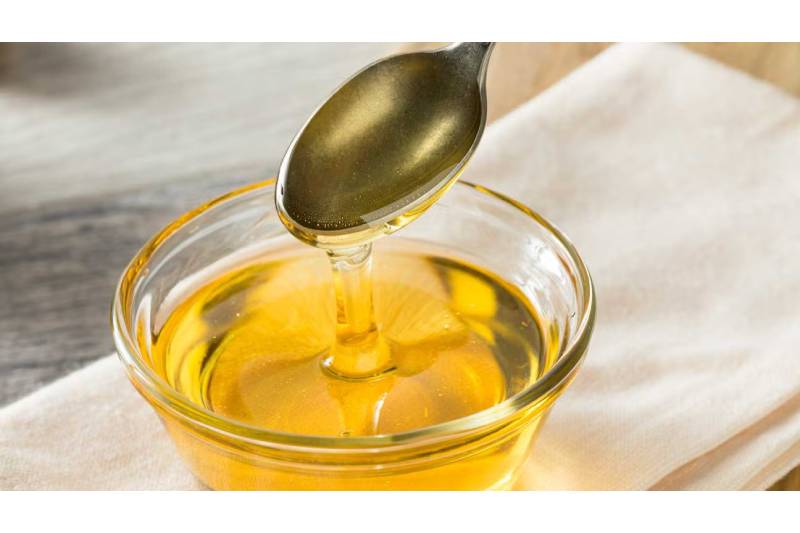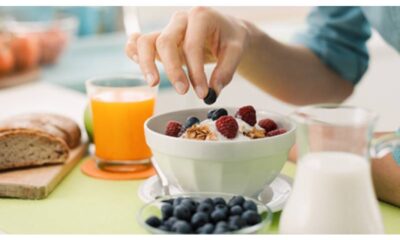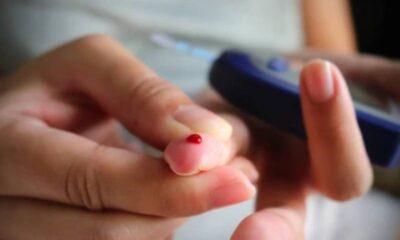Diabetology
Best Low Glycemic Sweeteners for Diabetics
Published
5 months agoon
By
Komal P
Stay Sweet Without the Spike
For people living with diabetes, managing blood sugar is a daily commitment. One of the key challenges is cutting down on sugar—without giving up the enjoyment of sweet-tasting foods. That’s where low-glycemic sweeteners come in. These alternatives to traditional sugar help keep blood glucose levels stable while still satisfying a sweet tooth.
In this comprehensive guide, we’ll explore the best low-glycemic sweeteners for diabetics, how they affect the body, and how to incorporate them safely into your diet.
What Is the Glycemic Index?
The Glycemic Index (GI) is a number from 0 to 100 assigned to a food, depending on how fast it raises blood sugar after eating.
- High-GI foods (70 or more) spike blood sugar quickly.
- Medium-GI foods (56–69) moderately raise it.
- Low-GI foods (55 or less) have minimal impact on blood sugar levels.
For people with diabetes, consuming low-GI foods helps maintain better glycemic control and avoid blood sugar spikes.
Why Choose Low-GI Sweeteners?
Traditional table sugar (sucrose) and high-fructose corn syrup have high GI values and can rapidly increase blood sugar levels. Low-GI sweeteners, on the other hand:
- Have minimal effect on blood sugar
- Help with weight control
- Reduce the risk of insulin resistance
- Lower cravings for high-carb foods
- Support better long-term diabetes management
Top 10 Low-Glycemic Sweeteners for Diabetics
Here’s a list of trusted, safe, and widely available sweeteners that are low on the glycemic index and suitable for diabetic diets.
1. Stevia
- GI Score: 0
- Source: Stevia rebaudiana plant (natural)
- Calories: Zero
- Taste Profile: 200–300 times sweeter than sugar
Benefits:
- Does not raise blood glucose levels
- Natural and plant-derived
- Available in powder, liquid, and tablet form
How to Use: Ideal for tea, coffee, smoothies, and baking (in small amounts).
2. Monk Fruit Sweetener (Luo Han Guo)
- GI Score: 0
- Source: Monk fruit, a small melon from Southeast Asia
- Calories: Zero
- Taste Profile: 150–200 times sweeter than sugar
Benefits:
- Contains antioxidants (mogrosides)
- No aftertaste for most people
- Safe for all ages, including children and pregnant women
Use Case: Excellent for beverages, sauces, and desserts.
3. Erythritol
- GI Score: 0
- Source: Fermented fruits and vegetables (sugar alcohol)
- Calories: 0.24 kcal/g (almost zero)
- Taste Profile: 70% as sweet as sugar
Benefits:
- Does not raise insulin or blood glucose
- No tooth decay
- Minimal digestive upset (compared to other sugar alcohols)
Note: In high amounts, it may cause mild bloating.
Great For: Baking, coffee, or cereal topping.
4. Xylitol
- GI Score: 7
- Source: Corn cobs or birch wood (sugar alcohol)
- Calories: 2.4 kcal/g
- Taste Profile: Nearly identical to sugar
Benefits:
- Promotes dental health
- Slow absorption = steady blood sugar
- Good sugar alternative for low-carb recipes
Caution: Toxic to dogs. Should be used moderately to avoid digestive upset.
5. Allulose
- GI Score: 0–1
- Source: Naturally found in figs, raisins, and wheat
- Calories: 0.4 kcal/g
- Taste Profile: 70% as sweet as sugar
Benefits:
- Does not raise blood glucose
- May improve insulin sensitivity
- Tastes very close to real sugar
Best Used In: Cookies, ice cream, and homemade sauces.
6. Yacon Syrup
- GI Score: ~1
- Source: Yacon root (Peru)
- Calories: Around 20 kcal per tablespoon
- Taste Profile: Mildly sweet, like molasses
Benefits:
- Contains fructooligosaccharides (prebiotics for gut health)
- Helps with weight loss and metabolism
- May improve insulin sensitivity
Use Caution: Heating reduces its prebiotic effect. Best used in cold recipes.
7. Agave Inulin Powder
- GI Score: ~1
- Source: Agave plant
- Calories: ~1.5 kcal/g
- Taste Profile: Mild, slightly sweet
Benefits:
- High in fiber
- Promotes gut flora balance
- May help with appetite control
Avoid high-fructose agave syrup. Use inulin powder instead.
8. Tagatose
- GI Score: 3
- Source: Dairy and fruits
- Calories: 1.5 kcal/g
- Taste Profile: 90% as sweet as sugar
Benefits:
- Very low impact on blood sugar
- Helps lower HbA1c levels in Type 2 diabetics
- May aid weight loss and improve lipid profiles
Available in: Granular or powder form; great for cereal and baking.
9. Coconut Sugar (Used Sparingly)
- GI Score: 35
- Source: Sap of coconut palm
- Calories: Similar to sugar
- Taste Profile: Slightly caramel-like
Benefits:
- Contains small amounts of iron, zinc, and potassium
- Less refined than white sugar
- Suitable for occasional use
Note: Still has fructose. Use in moderation.
10. Date Sugar (Occasional Use)
- GI Score: 50–55
- Source: Ground dried dates
- Calories: ~20 per teaspoon
- Taste Profile: Rich, fruity sweetness
Benefits:
- Contains fiber and antioxidants
- Nutrient-rich compared to white sugar
- Not as processed
Use In: Energy bars, smoothies, muffins, or sauces.
Sweeteners to Avoid If You’re Diabetic
Not all “natural” sweeteners are safe for diabetes. Avoid or limit:
- White sugar (GI ~65)
- Brown sugar
- High-fructose corn syrup
- Maple syrup
- Honey (GI 58)
- Agave nectar (GI up to 90)
- Artificial sweeteners like aspartame and saccharin (may trigger cravings or gut imbalance in some individuals)
How to Choose the Right Sweetener
Here’s a quick guide to picking the best sweetener based on your need:
| Need | Best Sweetener |
|---|---|
| Zero calories | Stevia, Erythritol, Monk Fruit |
| Baking | Allulose, Xylitol, Tagatose |
| Gut health | Yacon Syrup, Agave Inulin |
| Weight loss | Stevia, Allulose |
| Indian recipes | Coconut Sugar (limited), Stevia drops |
How Much is Too Much?
Even low-GI sweeteners should be used in moderation. Excess consumption of sugar alcohols (like xylitol and erythritol) can cause bloating or diarrhea.
Also, while low-GI sweeteners don’t spike glucose, some may still impact insulin response or gut flora in large quantities. The goal is to reduce dependence on sweetness altogether over time.
Tips to Reduce Sugar Cravings Naturally
- Eat more protein and fiber (keeps you full)
- Drink plenty of water
- Avoid artificial sweeteners (they may trigger cravings)
- Use cinnamon or nutmeg as natural flavor boosters
- Train your taste buds to prefer less sweetness
Conclusion
Living with diabetes doesn’t mean you must live without sweetness. With low-glycemic sweeteners, you can enjoy desserts, drinks, and treats without the blood sugar rollercoaster.
Whether you choose stevia, monk fruit, erythritol, or allulose, always aim for balance and moderation. Pair these sweeteners with a whole-food, low-carb diet, regular exercise, and regular glucose monitoring for best results.
You may like
-


Morning Routine for Diabetics: Simple Steps to Stabilize Blood Sugar
-


The Link Between Blood Sugar and Overall Wellness
-


Daily Tips for Healthy Blood Sugar Control for Beginners
-


Top 10 Lifestyle Changes to Beat Prediabetes
-


Ayurvedic Remedies to Manage Type 2 Diabetes Effectively
-


Scientists Discover Sweet and Simple Way to Reduce Diabetes Risk — No Medicine Required
The Latest News
- Daily Routine for Diabetics: A Complete Guide to a Healthy, Balanced Day
- Morning Routine for Diabetics: Simple Steps to Stabilize Blood Sugar
- Diabetes and Heart Disease Connection: Early Signs, Risks & Prevention
- Reversing Type 2 Diabetes: What the Latest Research Says in 2025
- Best Lifestyle Changes to Lower Stress and Balance Blood Sugar Naturally
- Best Morning Routine for Diabetics: A Complete Guide
- Diabetes Management: Effective Strategies to Control Blood Sugar Naturally

Daily Routine for Diabetics: A Complete Guide to a Healthy, Balanced Day

Morning Routine for Diabetics: Simple Steps to Stabilize Blood Sugar

Diabetes and Heart Disease Connection: Early Signs, Risks & Prevention

Lung growth invading Treg have different transcriptional profiles and capability connected to designated spot bar reaction

Psoriasis be treatment by adjuvant Salicylic acid, ceramides as this containing lotions


